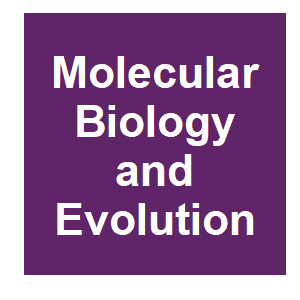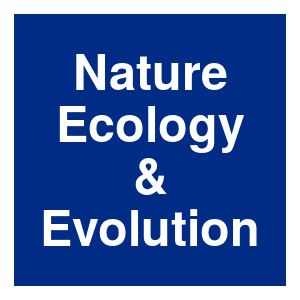
Keywords: simulans

|
The evolutionary history of Drosophila simulans Y chromosomes reveals molecular signatures of resistance to sex ratio meiotic driveC. Courret, D. Ogereau, C. Gilbert, A. M. Larracuente and C. Montchamp-Moreau, Mol Biol Evol, 2023.
The recent evolutionary history of the Y chromosome in Drosophila simulans, a worldwide species of Afrotropical origin, is closely linked to that of X-linked meiotic drivers (Paris system). The spread of the Paris drivers in natural populations has elicited the selection of drive ... Keywords: drosophila, gene drive evolution, gene drive natural, meiotic drive, selective sweep, sex chromosomes, simulans, Y chromosome variation |

|
Regulatory logic of endogenous RNAi in silencing de novo genomic conflictsJ. Vedanayagam, C. J. Lin, R. Papareddy, M. Nodine, A. S. Flynt, J. Wen and E. C. Lai, PLOS Genetics, 19:e1010787. 2023.
Although the biological utilities of endogenous RNAi (endo-RNAi) have been largely elusive, recent studies reveal its critical role in the non-model fruitfly Drosophila simulans to suppress selfish genes, whose unchecked activities can severely impair spermatogenesis. In ... Keywords: drosophila, gene drive evolution, gene drive natural, meiotic drive, selective sweep, sex chromosomes, simulans, Y chromosome variation |

|
Essential and recurrent roles for hairpin RNAs in silencing de novo sex chromosome conflict in Drosophila simulansJ. Vedanayagam, M. Herbette, H. Mudgett, C. J. Lin, C. M. Lai, C. McDonough-Goldstein, S. Dorus, B. Loppin, C. Meiklejohn, R. Dubruille and E. C. Lai, PLoS Biol, 21:e3002136. 2023.
Meiotic drive loci distort the normally equal segregation of alleles, which benefits their own transmission even in the face of severe fitness costs to their host organism. However, relatively little is known about the molecular identity of meiotic drivers, their strategies of ... Keywords: drosophila, gene drive evolution, gene drive natural, meiotic drive, selective sweep, sex chromosomes, simulans, Y chromosome variation |

|
The fate of a suppressed X-linked meiotic driver: experimental evolution in Drosophila simulansH. Bastide, D. Ogereau, C. Montchamp-Moreau and P. R. Gérard, Chromosome Research, 2022.
Sex-ratio (SR) meiotic drivers are X-linked selfish genetic elements that promote their own transmission by preventing the production of Y-bearing sperm, which usually lowers male fertility. The spread of SR drivers in populations is expected to trigger the evolution of unlinked ... Keywords: drosophila, gene drive evolution, gene drive natural, meiotic drive, selective sweep, sex chromosomes, simulans, Y chromosome variation |

|
Rapid evolutionary dynamics of an expanding family of meiotic drive factors and their hpRNA suppressorsJ. Vedanayagam, C. J. Lin and E. C. Lai, Nature Ecology and Evolution, 2021.
Meiotic drivers are a class of selfish genetic elements whose existence is frequently hidden due to concomitant suppressor systems. Accordingly, we know little of their evolutionary breadth and molecular mechanisms. Here, we trace the evolution of the Dox meiotic drive system in ... Keywords: drosophila, gene drive evolution, gene drive natural, meiotic drive, selective sweep, sex chromosomes, simulans, Y chromosome variation |

|
Satellite DNA-mediated diversification of a sex-ratio meiotic drive gene family in DrosophilaC. A. Muirhead and D. C. Presgraves, Nature Ecology & Evolution, 2021.
Sex chromosomes are susceptible to the evolution of selfish meiotic drive elements that bias transmission and distort progeny sex ratios. Conflict between such sex-ratio drivers and the rest of the genome can trigger evolutionary arms races resulting in genetically suppressed ... Keywords: drosophila, gene drive evolution, gene drive natural, meiotic drive, selective sweep, sex chromosomes, simulans, Y chromosome variation |

|
Red queen’s race: rapid evolutionary dynamics of an expanding family of meiotic drive factors and their hpRNA suppressorsJ. Vedanayagam, C.-J. Lin and E. C. Lai, bioRxiv, 2021.08.05.454923. 2021.
Meiotic drivers are a class of selfish genetic elements that are widespread across eukaryotes. Their activities are often detrimental to organismal fitness and thus trigger drive suppression to ensure fair segregation during meiosis. Accordingly, their existence is frequently ... Keywords: drosophila, gene drive evolution, gene drive natural, meiotic drive, selective sweep, sex chromosomes, simulans, Y chromosome variation |

|
Sex-ratio meiotic drive shapes the evolution of the Y chromosome in Drosophila simulansQ. Helleu, C. Courret, D. Ogereau, K. L. Burnham, N. Chaminade, M. Chakir, S. Aulard and C. Montchamp-Moreau, Molecular Biology and Evolution, 36:2668-2681. 2019.
The recent emergence and spread of X-linked segregation distorters-called "Paris" system-in the worldwide species Drosophila simulans has elicited the selection of drive-resistant Y chromosomes. Here, we investigate the evolutionary history of 386 Y chromosomes originating from ... Keywords: drosophila, gene drive evolution, gene drive natural, meiotic drive, selective sweep, sex chromosomes, simulans, Y chromosome variation |

Contact
David O’Brochta
Foundation for the
National Institutes of Health
geneconvenevi@fnih.org
RSS

